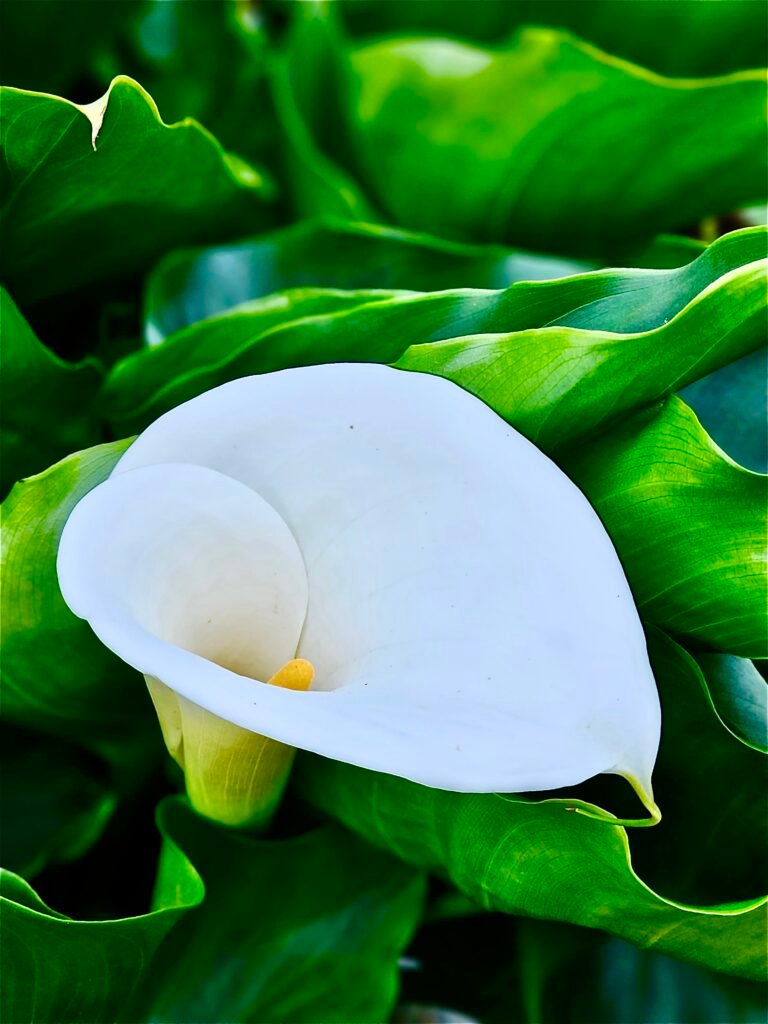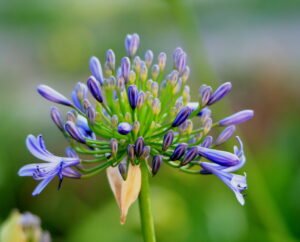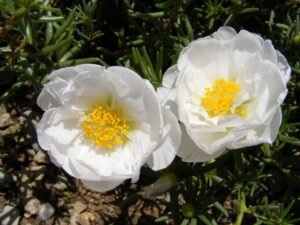How To Grow And Care for Calla Lily Flower: Beginner’s Guide

Calla lilies are elegant and beautiful flowers that can add a touch of sophistication to any garden or floral arrangement. With their trumpet-shaped blooms and vibrant colors, they are a popular choice for both experienced gardeners and beginners alike. In this beginner’s guide, we will walk you through the steps of growing and caring for calla lily flowers, ensuring that you can enjoy their beauty all season long.

Some Interesting Facts About Calla Lily
- Calla lily are actually not lily plant. They might look similar to lily plant but they are from an entirely different plant family know as Araceae. Some famous plants in Araceae family are Philodendron, Anthurium and Syngonium.
- Calla Lilies botanical name is Zantedeschia aethiopica, it is commonly known as arum lily also. Calla lily is a species of flowering plant native to southern Africa in Lesotho, South Africa, and Eswatini.
- The name calla comes from the Ancient Greek word for beauty, Kallos.
- Calla lily comes in various colors i.e. classic white, yellow, orange, rose, pink, lavender and dark maroon.
- Calla lily is national flower of Ethiopia. Calla lily symbolizes beauty, purity, union and rebirth.
Some Commonly Asked Questions About Calla Lily
How calla lilies are grown?
Calla lily is popularly grown from rhizomes or blubs though calla lily can be grown from seeds also. Main problem with seeds grown calla lily is that they takes around 3 years to bloom while rhizome grown calla lily takes around 2 weeks to germinate and 14-16 weeks to bloom. Further in this blog you will learn how to grow calla lilies.
Is Calla lily An Annual or Perennial Plant?
Calla lilies are perennial plant that blooms years after year. But if you are in areas that have harsh winters it must be protected in winters from frost. It is ideal to move calla lily plants indoors where it is safe from cold temperature and frosty conditions.
Is Calla Lily An Indoor Or Outdoor Plant?
Calla lily grows best in sunlight. You can plant calla lily in ground or in pots or containers. If you are planning to grow calla lily indoors in pots or containers ensure to keep it in areas that receives good amount of sunlight. In winters keep it away from window or doors that have flow of cold air or wind.
Calla lily are native plant of South Africa and they grows best in humid and moist environment. They grows best in 60 Degree Fahrenheit (15.5 Degree Celsius) to 80 Degree Fahrenheit (26.6 Degree Celsius) temperature range. Calla Lily plant goes in hibernation if temperature drops below 50 Degree Fahrenheit (10 Degree Celsius).
Is Calla Lily poisonous?
Calla lilies are toxic as it have calcium oxalate crystals and you have to be extra careful to keep it out of reach for children and pets. If any part of calla lilies is ingested it can cause throat pain, difficulties in breathing and mouth sores. Calla lily sap may cause skin and eye irritation. So it is best to handle calla lily plants with gloves and it is advised to handle the plants carefully.
Calla Lily Weeping?
If you are overwatering your calla lily plant it will start to exude its excess moisture in the form of sap. It is a natural phenomena called Guttation. So if your calla lily plant is dripping or weeping cut down on watering and it will be fine.
How To Grow Calla Lily Plant?
A. Choosing the Right Location
Calla lilies thrive in locations with full sun to partial shade. Hence It is important that you choose a spot in your garden that receives 6-8 hours of direct sunlight each day. If you live in a hot climate, some afternoon shade can help protect the flowers from scorching. Additionally, calla lilies prefer well-draining soil, so make sure the area you choose has good drainage. If you are planning to grow calla lilies in pots or containers ensure it have drainage hole and soil is rich in organic matter. Best potting soil mix for calla lily is 2 parts garden soil 1 Part Compost/vermicompost/organic manure and 1 Part sand.
B. Planting Calla Lily Bulbs
Spring is the best time to plant calla lily bulbs. Once the danger of frost is passed you can plant calla lilies bulbs. Before planting, prepare the soil by adding organic manure/ compost/vermicompost to it, loosen the soil and remove any weeds or debris. Dig a hole that is about 2-3 times the size of the bulb, and place the bulb in the hole with the pointed end facing up. Cover the bulb with soil, tap gently to firm it around the base.
How To Care For Calla Lily Plant?
A. Watering and Fertilizing
Calla lilies require regular watering, especially during dry spells. Keep the soil evenly moist, but ensure there is no waterlogging. As excessive moisture in soil can cause the calla lily bulbs to rot. It’s a good idea to water deeply once or twice a week, allowing the water to penetrate the root zone. Avoid overhead watering and water directly on roots as water on leaves can lead to fungal diseases.
When it comes to fertilizing, calla lilies benefit from a balanced, slow-release fertilizer applied in early spring. Additionally you can feed your plants NPK 5-10-10 once every 2 weeks to increase blooms in plant and to keep it blooming.
B. Support and Staking
As calla lilies grow, their tall stems may need support to prevent them from falling over. Use stakes or cages to provide support, being careful not to damage the bulbs or roots. It’s best to install the support system early in the growing season, as it can be difficult to insert stakes without disturbing the plant once it has started to grow.
C. Dealing with Pests and Diseases
While calla lilies are relatively resistant to pests and diseases, they can still be susceptible to certain problems. Aphids, snails, and slugs are common pests that may target calla lilies. Regularly inspect your calla lily plants and take appropriate measures to control these pests if necessary. Additionally, fungal diseases such as root rot and powdery mildew can occur in humid conditions. To prevent these issues, avoid over-watering and provide good air circulation around the plants.
D. Harvesting and Enjoying the Blooms
Calla lilies typically bloom from late spring to early fall, depending on the variety. Once the flowers have fully opened, you can cut them for floral arrangements. Use clean, sharp scissors or pruners to remove the blooms just above the foliage. To extend the vase life of the flowers, place them in a clean vase filled with fresh water and add floral preservative. Blooms in calla lily lasts from 6 to 12 weeks.
Conclusion
Growing and caring for calla lily flowers can be a rewarding experience for beginners and seasoned gardeners alike. By providing the right conditions, regular watering, and appropriate support, you can enjoy the beauty of these stunning flowers throughout the growing season. Remember to keep an eye out for pests and diseases, and take prompt action if necessary. With a little care and attention, your calla lilies will flourish and bring joy to your garden or home.
Tags: #Calla Lily Plant Care, #How To Care calla lily Plant, #How to Grow calla lily Plant, #Calla lily plants care for beginners, #Calla Lily Plant care tips, #AmazeGarden.Com, #Plants Care Tips, #Gardening, #Kitchen Gardening, #Terrace Gardening, #Backyard gardening, #Container Gardening, #Urban Gardening, #plants Care, #Calla Lily Flower Care, #Calla Lily Flower Care Tips, #Calla Lily Care
To Get Latest News, Tips and Tricks Directly In Your Mailbox Kindly Subscribe Our Newsletter!









